KNIT MAGAZINE
Casual Elegance: Exploring Hem Designs in Knitwear

- Post date:
- February 20, 2024 07:00
- (Update: February 5, 2024 22:52)
KNIT MAGAZINE

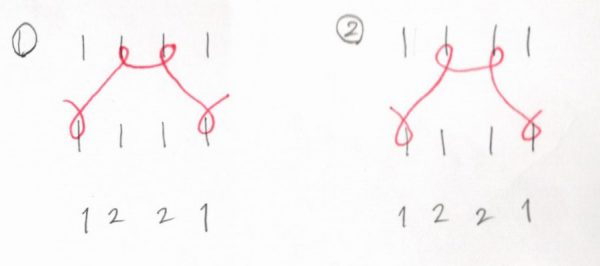
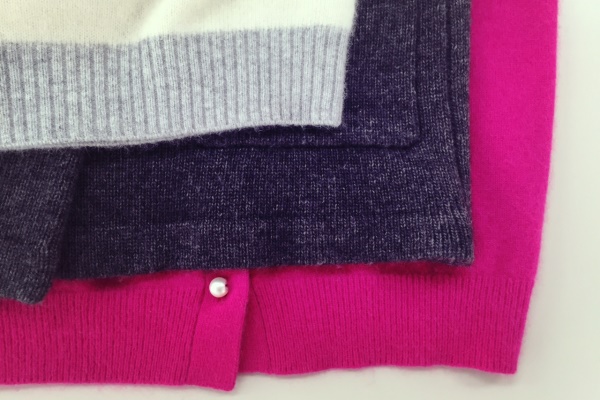
Recently, the 2×1 rib that I consistently specified casually came from the factory by mistake. Upon inspection, the factory mentioned that there were two variations of 2×1 ribs, and the knitted fabric differed from the 2×2 ribs. Indeed, it appears to have 2 stitches on the front and 1 on the back, but the back 1 stitch resembles a pig eye, while the front looks like a full needle…
As I will explain later, there isn’t much distinction in the appearance of 2×1 ribs and 2×2 ribs. While recognizing the need for differentiation, there are various ribs on the hem, cuffs, and collar. I believe it’s fair to say that they play a crucial role in determining the product’s overall look. Therefore, I would like to pay special attention to accessories this time!
Table of Contents
A knitted sweater that I wear casually. Upon examining the hem and cuffs, various designs catch the eye—some tighter than others. The hem’s design serves as a crucial element in knits, influencing the overall silhouette significantly. In a way, it acts as a powerhouse beneath the edge! In this presentation, I will introduce four fundamental designs along with their distinctive features.
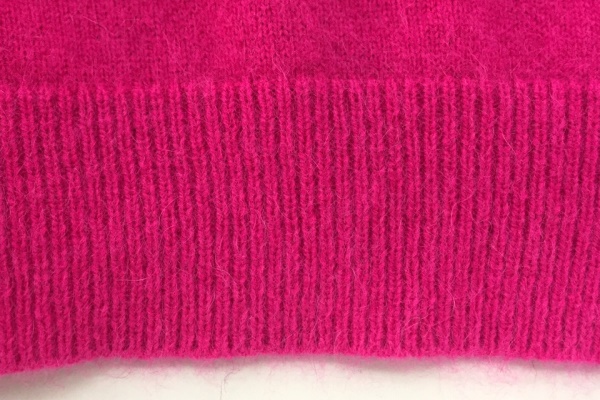
When contemplating hem designs, many people envision this particular style. It features elasticity on both the left and right, creating a trimmer look for the hem and cuffs. The design stops without excessive slack, allowing for the creation of a distinctive rounded silhouette characteristic of knitwear. This design is recommended when aiming for a classic and orthodox knit appearance. Additionally, the soft vertical lines contribute to a sleek and neat overall design.
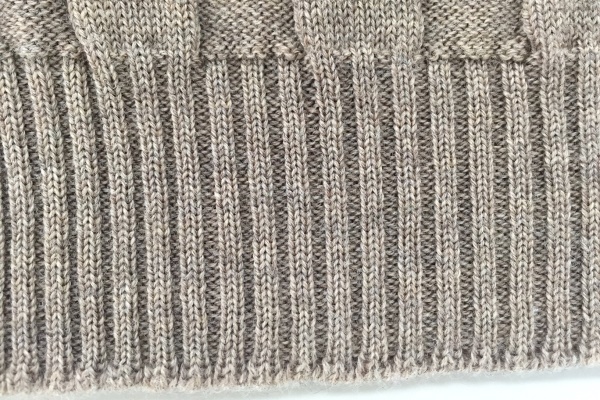
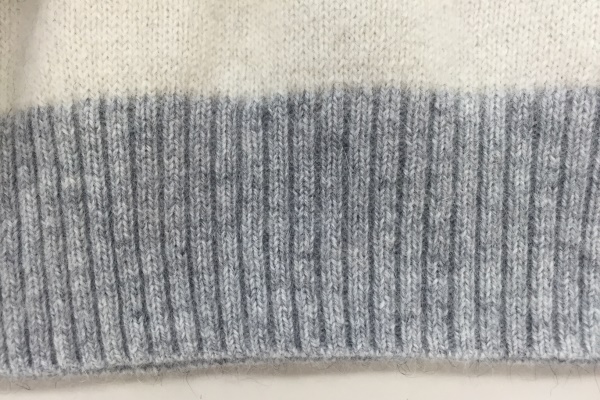
Next, let’s explore 2×2 ribs and 2×1 ribs.
The top showcases 2×2 ribs, while the bottom features 2×1 ribs. As mentioned earlier, they may not appear significantly different at first glance! However, upon closer inspection…
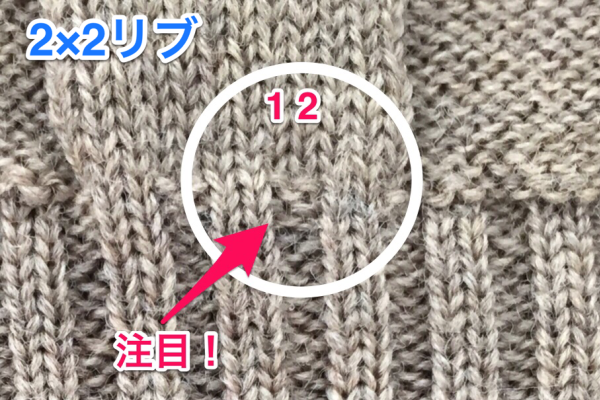
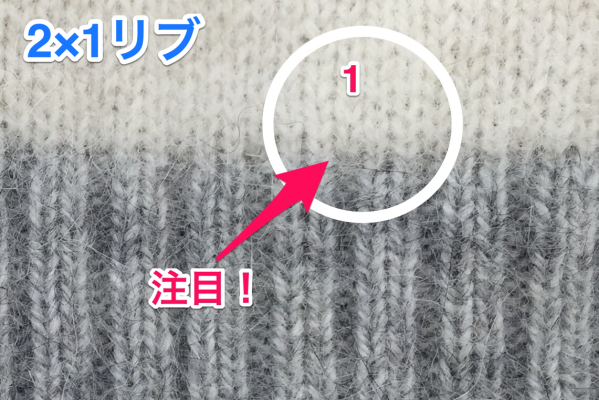
Pay close attention to the knitted fabric above. There’s a notable difference in the number of stitches between the second vertical lines!
And there are also variations in their characteristics. In fact, 2×2 ribs are known for having weaker left and right expansion and contraction, while 2×1 ribs are considered stronger in this aspect.
When I attempted to create a 2×2 rib, it didn’t tighten as expected. Some people may have had a similar experience. To explain with a needle stand analogy, in 2×1 ribs, the front and back bets are knitted with a half-pitch shift. As a result, the “1” of the 2×1 rib becomes the needle stand for the entire needle, different from 2×2 rib. Due to the shorter thread crossover, it is theorized that 2×1 ribs exhibit stronger expansion and contraction.
Perhaps this is delving a bit into the details, but it adds a touch of expertise!
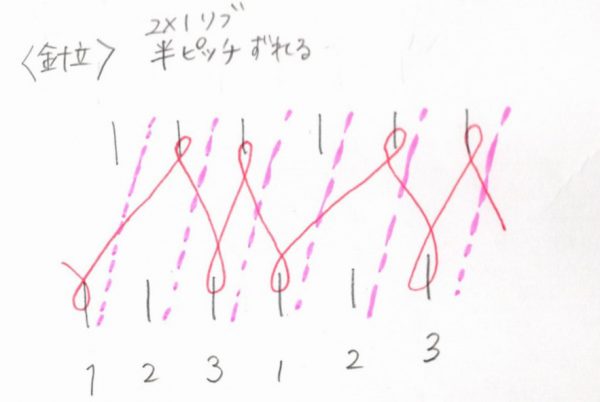
Below is a 2×2 rib. Since the back bet and the front bet are arranged in parallel and repeat ①⇒②, the thread crossover is long.

For both, the vertical ridges are thicker compared to 1×1 ribs. Therefore, When it comes to thick knits, men’s knits, cable patterns, and similar styles, it is advisable to opt for 2×2 ribs or 2×1 ribs.
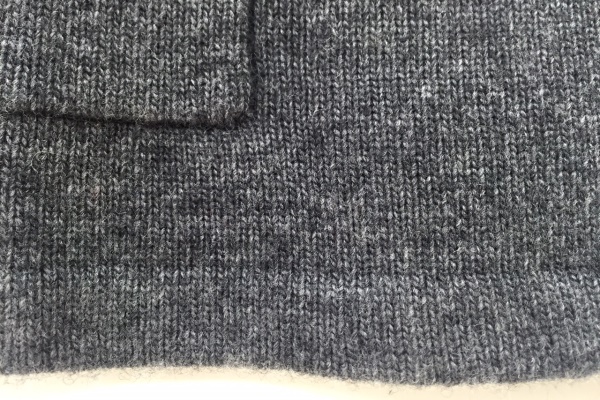
The distinctive feature of the tubular plain stitch is its minimal shrinkage. When employed in a pullover, it imparts a silhouette akin to a T-shirt. On the other hand, when used in a cardigan, it can create a silhouette resembling a jacket. Moreover, it appears versatile enough for application not only in tops but also in skirts and pant hems! During my student years, the knit products I crafted involved knitting jackets and similar items to create bags.
Another creative approach is to employ the idea as it is: inventing wide ribs. To be precise, it involves placing 1×1 rib in the minimal course, creating the illusion of a wide rib. The minimal length of 1×1 rib may not be noticeable from a distance, making it effective when you wish to avoid drawing attention to the attachment.
Moreover, knitting from the bind-off imparts a sharp and frilled appearance, evoking a casual atmosphere. If a more subdued start is desired, the method of inserting the minimum course 1×1 rib is recommended.
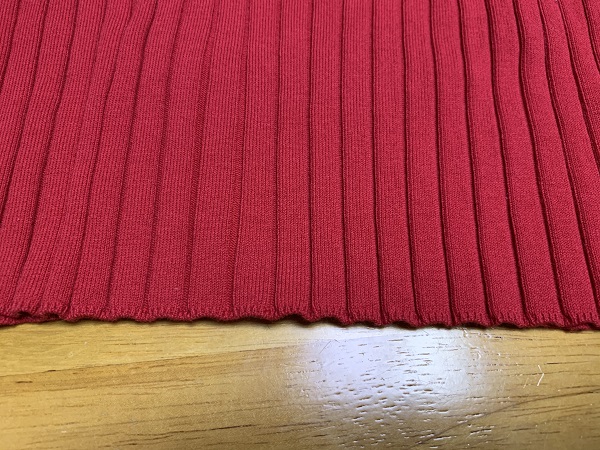
Milano ribs and smooth knitting are not only used as textures but can also serve as grounding techniques in knitting. In terms of structure, they exhibit minimal expansion and contraction and possess a substantial thickness, making them particularly well-suited for jackets.
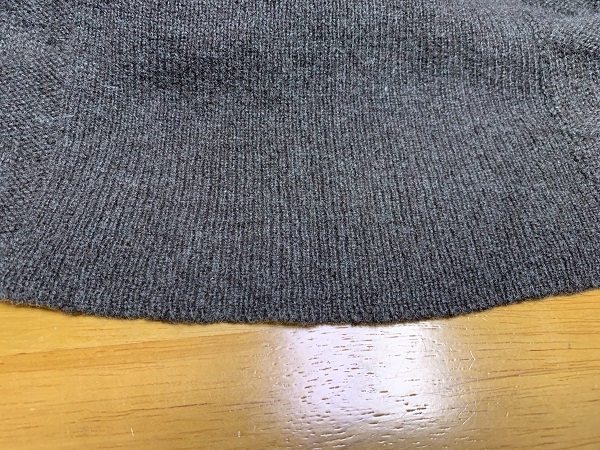
Although it is an extra edition, there are also such design items. It has a cute taste, but since it is unique to knitwear, it seems to have a luxurious feel. There are things you can do with machine knitting and hand knitting.
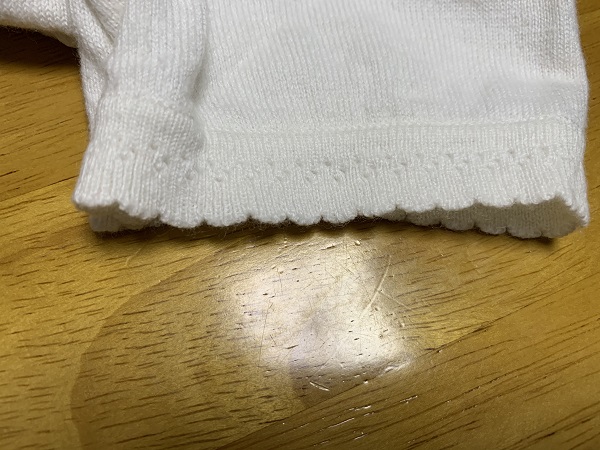
Your insights into the design of hems in knit products provide valuable considerations for achieving distinct looks. Indeed, the design of the hem plays a crucial role in shaping the overall appearance of knitted items. Understanding the nuances of different rib patterns and stitches allows for intentional and creative choices in knitwear design. I hope these insights prove helpful for anyone looking to craft unique and precisely tailored knit products.
Subscribe Now
To receive the latest updates and insights, subscribe to our newsletter.
Contact Us
For further inquiries regarding this article, please feel free to contact us.